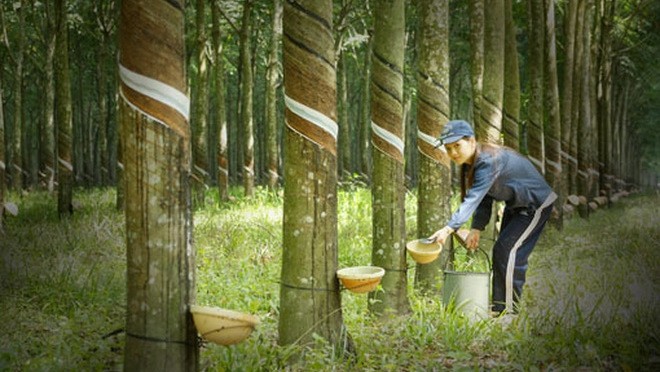According to statistics from the Ministry of Agriculture and Rural Development, Vietnam exported an estimated 184,000 tonnes of rubber in the first two months of 2018 at a total value of US$217 million, an increase of 0.4% in terms of volume but a decrease of 27% in terms of value compared to the same period in 2017.
Thanks to a higher demand for rubber from foreign importers, the price of rubber has risen to VND40 million (US$1,600) per tonne, from VND32 million (US$1,280) per tonne since the Lunar New Year. However, experts warned that it will be difficult to maintain the positive trend for long and price fluctuations may be a recurring scenario for the rubber sector in 2017.
In the first two months of 2017, the price of rubber stood at roughly US$2,630 per tonne but after March, rubber prices faced irregular fluctuations and dropped to around US$1,600 per tonne.
The rubber crop in 2017 was a warning about the instability and risks that both rubber growers and traders may encounter in 2018.
Experts fear that the demand for rubber will rise until the end of this year but will be slower than the increase in the supply, which will result in a decrease in prices, with the average price hovering around VND36-37 million (US$1,584-US$1,628) per tonne.
Meanwhile, Vietnam imported 96,000 tonnes of rubber in the first two months of this year with a total value of US$166 million, up 20.8% in terms of volume and 1.9% in terms of value compared to 2017.
The fact shows that Vietnam mainly exports raw rubber with a low value while importing a large amount of rubber products for deep processing as the production of current types of Vietnamese rubber is yet to meet the demands of domestic manufacturers.
To resolve the trade balance problem in rubber imports and exports and to create an abundant supply of rubber materials for domestic production, the rubber industry should restructure its current rubber products toward deep processing in order to create higher added values.
The rubber sector also needs to improve the quality and value of its products through the application of advanced technology in production while expanding export markets and boosting trade promotion.
















